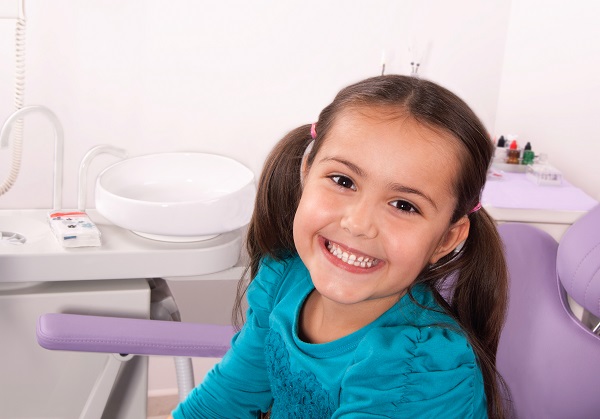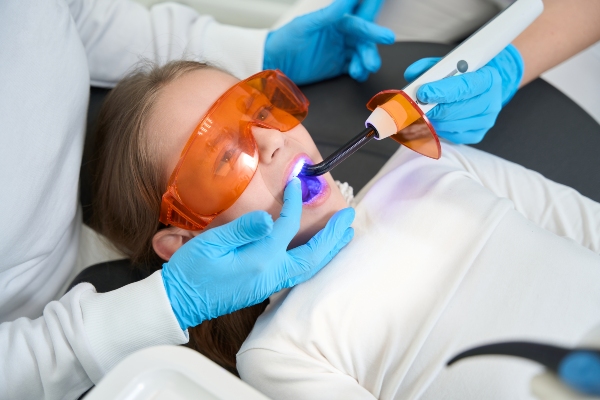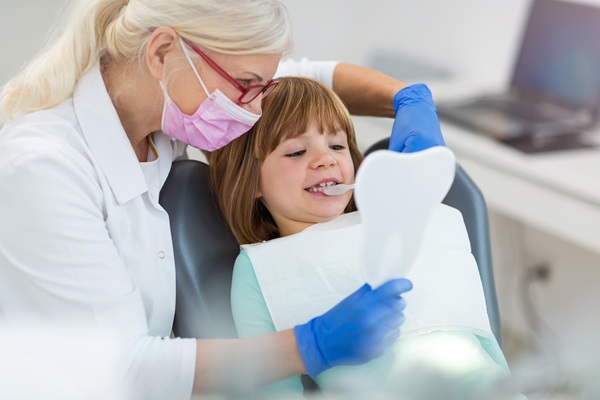Making a Pediatric Dentistry Appointment for Facial Swelling

Pediatric dentistry is an important branch of dentistry that focuses on the treatment of children, infants and young adults. Facial swelling is a common problem in young patients. An abscessed tooth is often associated with facial swelling. Read about when you should take your child to a pediatric dentist for a dental abscess with facial cellulitis.
Pediatric dentistry for facial swelling
A dental abscess is an infection at the base of a patient’s tooth. It usually means a pus pocket has formed at the tip of the root of the tooth in the jawbone. If left untreated, the infection can appear as a swelling on the gum near the tooth. Serious infections usually spread to the face, which causes the face to swell (cellulitis). This is regarded to be a very serious infection.
Once the swelling begins, it is not uncommon for it to spread quickly. A dental abscess often begins with a cavity or crack in a tooth. The pain is usually made worse by biting on hard foods or drinking cold or hot beverages. The pain may spread from the tooth to the jaw area on the same side or the ear.
When to see a pediatric dentist
Some common signs and symptoms of an abscess include fever, swelling in the cheek or face, pain, redness in the gums and a bad taste in the mouth. Difficulty breathing is also another common symptom. A parent should schedule an appointment with the dentist or doctor after noticing any of the signs and symptoms of the infection. Seeking immediate medical care or calling the dentist or doctor right away is highly recommended if the child has worsening signs of the infection. These include increased pain, swelling, redness or warmth or fever. Going to the emergency room is ideal if the dentist cannot be reached or if the child has trouble breathing.
Home care
There are several ways the parent can care for the child at home. Putting a cold pack or ice on the outside of a child’s cheek may reduce swelling and pain in the face and jaw. This should be done for either 10 to 20 minutes at a time. If an antibiotic is prescribed, it should always be taken as directed.
It is recommended for the child to take the full course of antibiotics. Over-the-counter medicine can also help ease the pain. Children should avoid hot and cold drinks and foods. Chewing on the side of the infected tooth is also discouraged.
Follow-up care
An abscessed tooth can be treated in a variety of ways. Follow-up care with a pediatric dentist is very important when it comes to your child’s treatment. Severe cellulitis should be checked again within 24 hours. Once a tooth infection occurs, it may continue being an issue until the infection is drained.
This may be done through a root canal or surgery. Sometimes, if other treatments do not work, your child’s tooth may have to be pulled. If you want to find out more about when you should schedule a pediatric dentistry appointment for facial swelling, talk to your pediatric dentist as soon as possible. Seeking treatment early is always recommended.
Request an appointment here: https://www.grandparkwaypediatricdental.com or call Grand Parkway Pediatric Dental at (832) 579-0960 for an appointment in our Richmond office.
Check out what others are saying about our services on Yelp: Read our Yelp reviews.
Recent Posts
Dental fillings for kids restore the smile for years to come. Proper aftercare and consistent oral hygiene help to ensure your child gets the most out of their fillings. Thankfully, caring for these restorations is simple and straightforward, particularly with the help of a pediatric dentist.A dental filling is a dental restoration that “fills” cavities…
Children's tooth care starts long before the first toothache, and thoughtful care helps prevent sensitivity and protect growing smiles. When toothaches or sensitivity appear, they cause worry for children and parents, but clear guidance and prompt care keep problems from escalating.Toothaches signal that something in the mouth needs attention. In children, discomfort may show up…
Dental fillings for kids provide many advantages. It is natural for parents to ensure their children’s comfort. Fillings can improve a decayed tooth’s function and appearance. It can also keep more dental decay at bay. Here are the details on how dental fillings for kids can prevent dental decay from worsening.All parents want their children…
Dental fillings for kids are crucial in preventing many dental issues. Baby teeth can develop cavities. Correcting this problem is important for developing permanent teeth. Here are the details on how preventive dentistry uses dental fillings for kids.Research shows that many school-age kids suffer from cavities. This disease is common even if it is preventable.…


